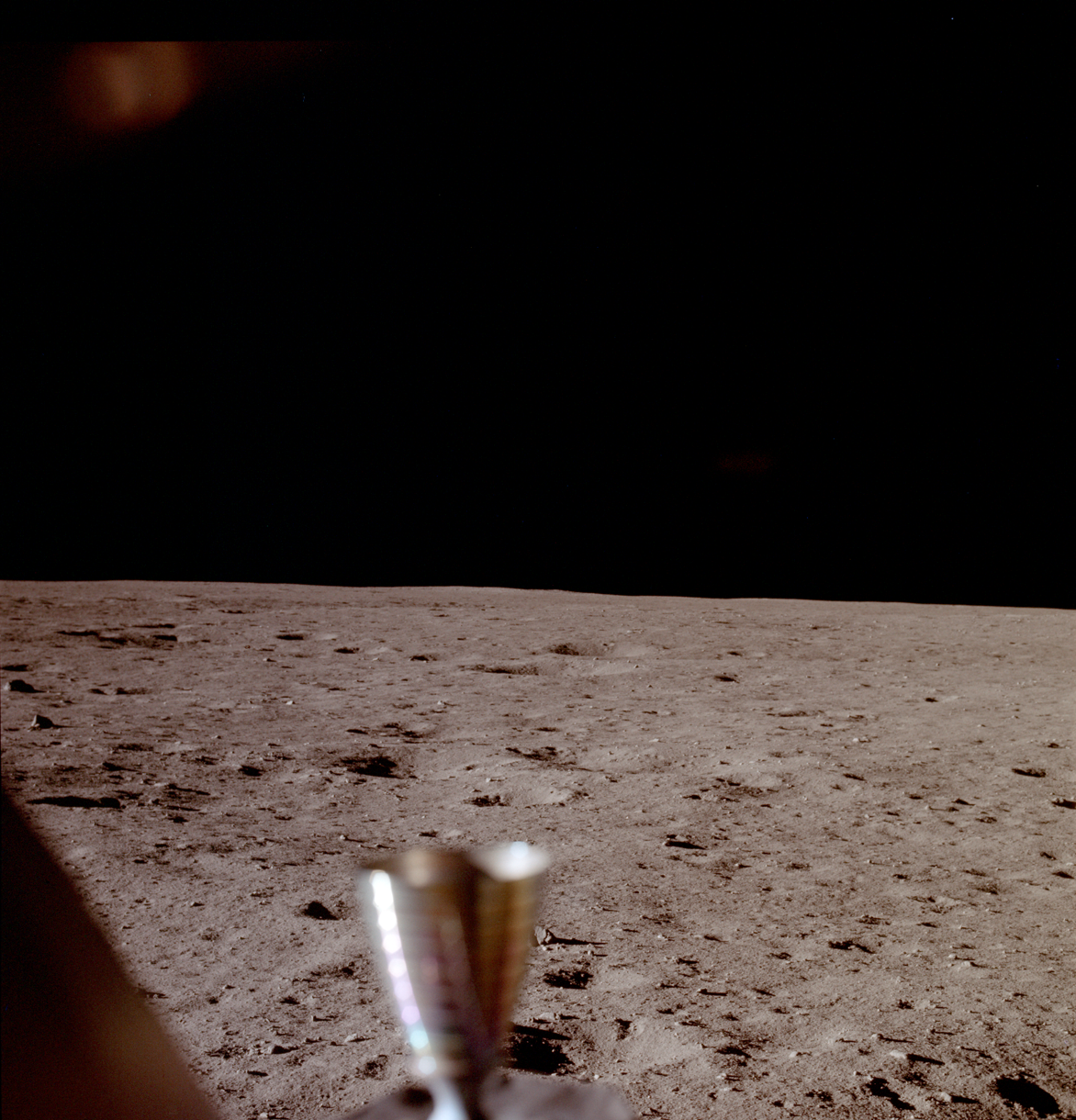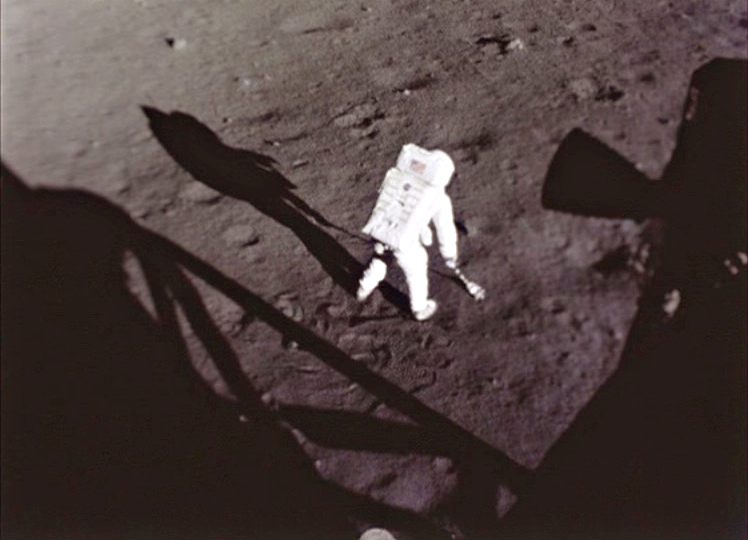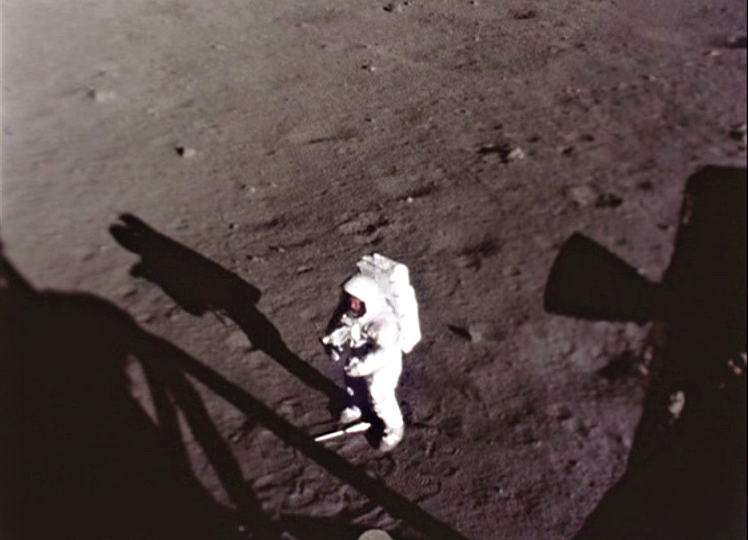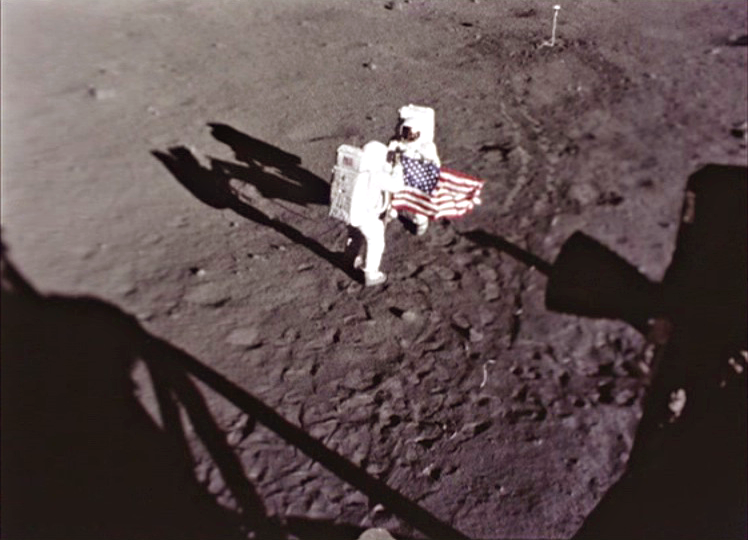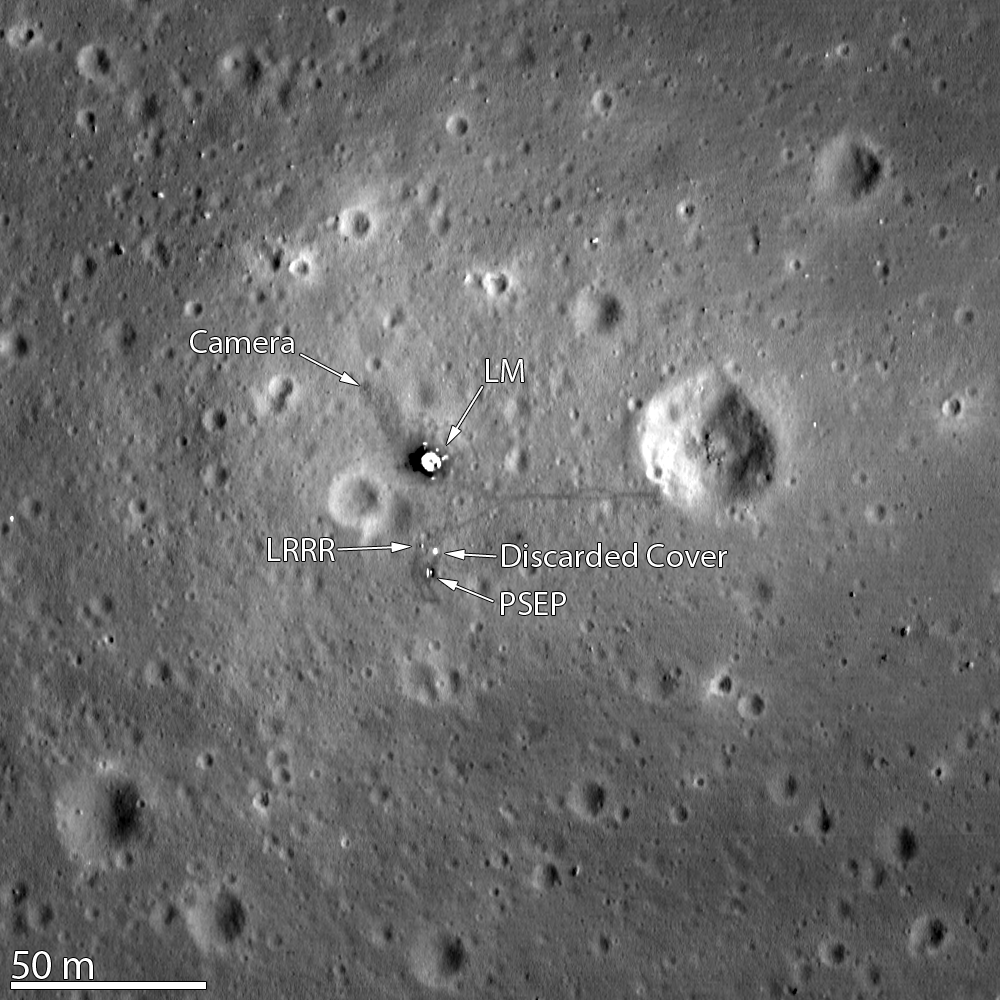
"Houston, Tranquility base here. The Eagle has landed."
With those words Neil Armstrong let the world know that the Apollo 11 lunar module Eagle had set down safely on the surface of the Moon (20 July 1969). They did it! A nearly impossible task, yet there they were, starkly alone, but in a real sense in front of millions of people back on Earth. Only ten other humans would follow Neil Armstrong and Buzz Aldrin to the lunar surface over the next three years. We have not been back since.
As we remember Neil Armstrong's many accomplishments after his sudden death this week, it is reassuring to know that the descent stage of Eagle, and various scientific instruments remain untouched, as though the crew only left yesterday. These artifacts are a reminder that humans can accomplish nearly impossible deeds through cooperation and teamwork.
Shortly after completing the contingency sampling, Armstrong noted the magnificent scene before him: "It has a stark beauty all its own. It's like much of the high desert of the United States. It's different, but it's very pretty out here." Buzz joined Neil on the surface and shortly they raised the United States flag and then unpacked, and setup sophisticated science experiments (Early Apollo Scientifc Experiments Package, EASEP) and collected a comprehensive set of samples (one of the greatest science bonanzas ever!). You can easily find the EASEP hardware in the LROC images, just south of the LM descent stage.
As we remember all that Neil Armstrong accomplished during his storied career, LRO and LROC continue Armstrong's journey, collecting critical measurements that will enable America's return to the Moon.
Listen to noted author Andrew Chaikin recall his conversations with Neil Armstrong.
Explore Tranquility base in the following NAC frame. Scroll through all the LROC images of this historic site.
Previous Apollo 11 LROC Featured Images:
LROC's First Look at the Apollo Landing Sites
Published by Mark Robinson on 27 August 2012
